An education blog where a real paleontologist teaches the stuff she ❤️
Don't wanna be here? Send us removal request.
Text
Monday Musings: Understanding Geologic Time

Deep time is not an easy thing to try and comprehend and it certainly doesn’t help when there’s all these crazy names being thrown at you. Let’s take a moment to break it down and really understand what we are seeing. The largest unit of geochronologic time is an eon. There are four formally defined eons: the Hadean, the Archean, the Proterozoic, and the Phanerozoic. The Hadean Eon is the oldest eon going from 4.6-4 Ga years ago. Its name is derived from the Greek god, Hades in reference to the still molten surface of the newly formed planet.
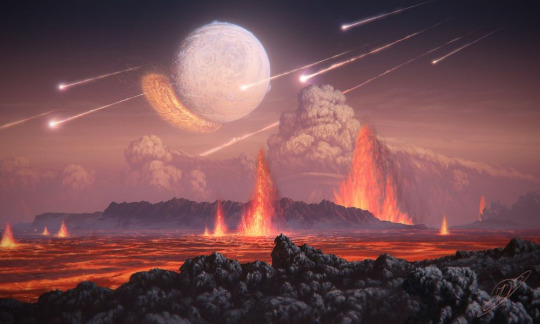
Following the Hadean Eon is the Archean Eon. This eon went from 4-2.5 Ga years ago. As mentioned in my Barberton Greenstone Belt video two weeks ago, this eon saw the creation of oceans and mountains as well as the appearance of the first living organisms known as stromatolites which would put oxygen into the atmosphere. Archean means “beginning or origin” which is fitting.
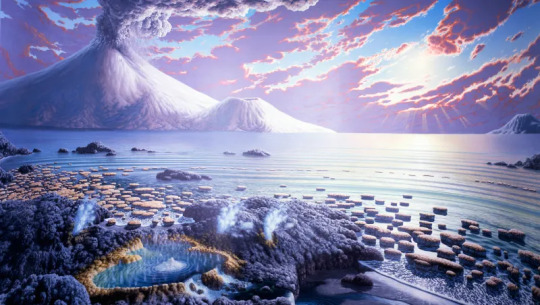
Next came the Proterozoic Eon. Lasted from 2.5 Ga-545 Ma. During this eon, the atmosphere became oxygenated, there were several glaciations, and the first eukaryotes evolved represented by the Ediacaran Biota. The name Proterozoic means “before life” because initially, fossils hadn’t been found until the Cambrian Period.

The last eon which we are currently in is the Phanerozoic Eon. It means “visible life” which makes sense as most living organisms have existed within this eon.

Okay, eons make sense? Excellent. Eons are broken down into eras. Now the Hadean is not broken into eras simply because the only evidence of this eon are detrital zircons in Australia.

The Phanerozoic Eon is the current eon and most of you are probably familiar with its eras: The Paleozoic Era, the Mesozoic Era, and the Cenozoic Era. These names mean “old life”, “middle life”, and “new life” respectively.
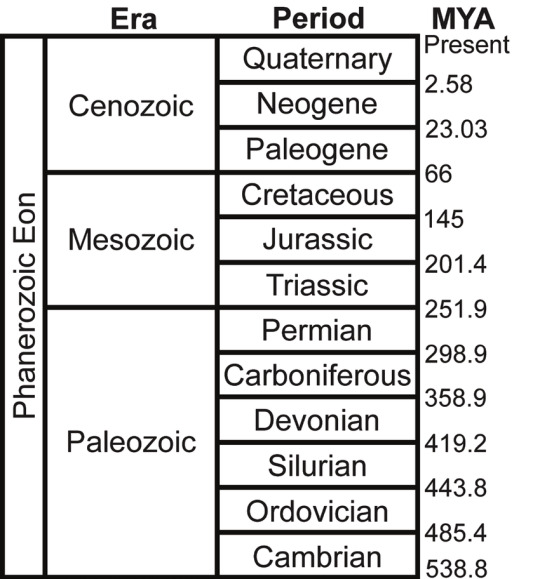
Eras are then split into periods. Like the Hadean before it, there isn’t enough evidence to split the Archean eras into periods. Again, we will use the Phanerozoic eras to show the break down starting with the Paleozoic.
The Paleozoic Era is split into six periods: the Cambrian Period,

the Ordovician Period,

the Silurian Period,
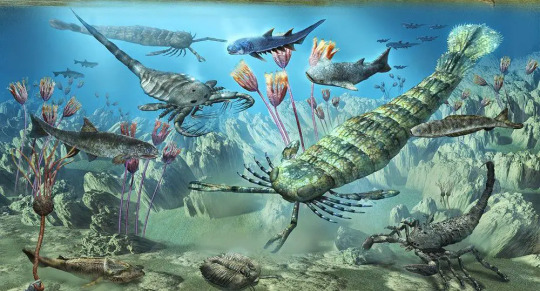
the Devonian Period,
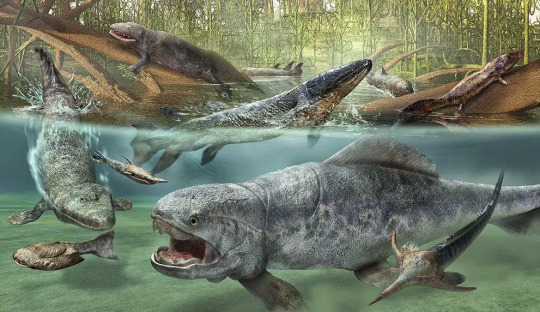
the Carboniferous Period

and the Permian Period.

These will be discussed in more detail later on down the road. I have already made posts on the Cambrian and the Ordovician Periods and this month is all about the Silurian Period.
The Mesozoic Era is split into three periods of which most people know the names: The Triassic,
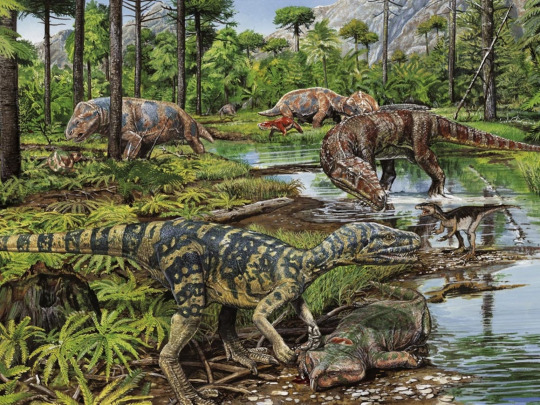
the Jurassic,

and the Cretaceous Periods.
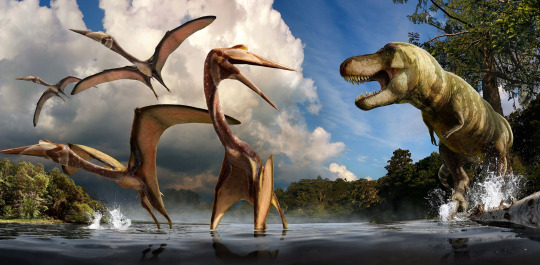
Each of these will be discussed in detail further down the road as well.
The Cenozoic Era is also split into three periods: The Paleogene Period,
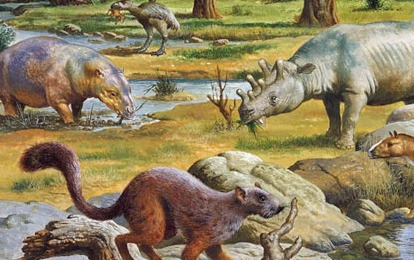
the Neogene Period,

and the Quaternary Period.

These will also be discussed in detail later.
Periods are further broken down into epochs. There are no formal epochs outside of the Phanerozoic Eon. Some early Paleozoic periods also do no have formal epochs. Many such as the Triassic and Jurassic Period are split into Early, Middle and Late. Strangely, the Cretaceous is only split into Early and Late though I think an argument could me made to create a middle.

The most well-known epochs are those of the Cenozoic Era. The Paleogene Period is split into three epochs: the Paleocene Epoch meaning “old dawn”,

the Eocene Epoch meaning “dawn”,

and the Oligocene Epoch meaning “few new”.
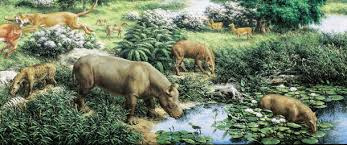
The Neogene Period is split into two epochs: the Miocene Epoch meaning “less new”
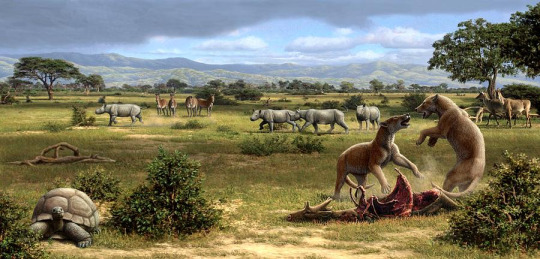
and the Pliocene Epoch meaning “more new/recent”.

The Quaternary Period is split into two epochs as well: the Pleistocene Epoch meaning “most new/recent”
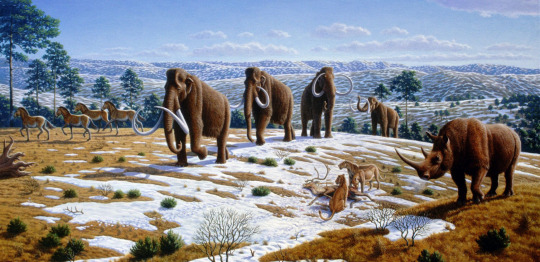
and the Holocene Epoch meaning “whole new” and is the epoch we are currently in.
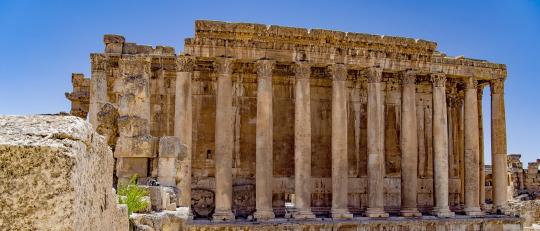
Epochs can then be broken down into still smaller categories called ages. For example, the Late Jurassic Epoch is broken up into three ages: Oxfordian Age, Kimmeridgian Age and Tithonian Age.
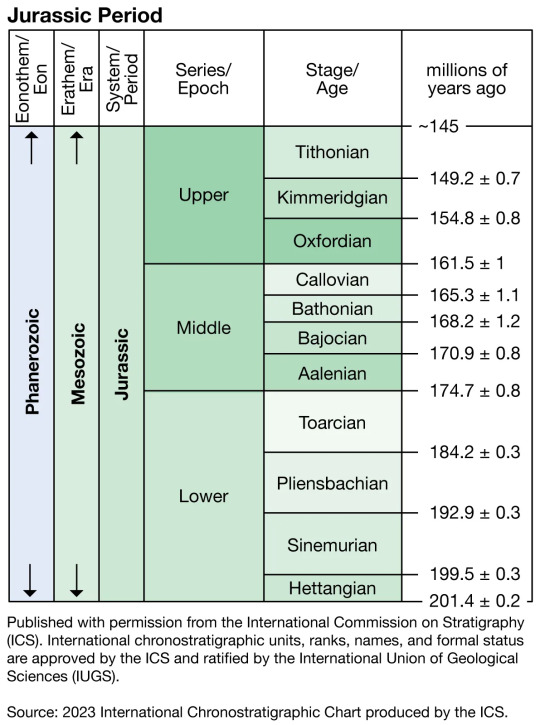
Now let’s put all these, eons, eras, periods, epochs, and ages into perspective. Let’s pretend Earth’s current lifespan is a clock. At 12:00, the Earth’s crust forms (Hadean Eon). At 2:10, the oldest rocks are preserved (Archean Eon). At 3:17, the first bacteria appear (Proterozoic Eon). At 11:52, the Cambrian Explosion occurs. At 11:53, first plants and fish. 11:54, first insects. 11:55, first reptiles and amphibians. 11:56, Mesozoic Era begins. 11:57, first dinosaurs, mammals, and birds. 11:59 Cenozoic Era.

Need a different visual? Try a calendar. The Hadean starts in January and ends halfway through February where the Archean picks up. The Archean lasts until halfway through June. From there, the Proterozoic starts and doesn’t end until about Thanksgiving. The Paleozoic Era then goes until about a week before Christmas. The Mesozoic covers Christmas to the December 30. New Year’s Eve represents the Cenozoic Era.
Thanks for coming to this lesson and make sure to tune in tomorrow for some fun trivia! Fossilize you later!

#paleontology#geology#fun facts#science education#earth science#deep time#geologic time scale#eon#paleozoic era#mesozoic#cenozoic#cambrian period#ordovician#silurian#devonian period#carboniferous#permian#triassic#jurassic period#cretaceous period#paleogene#neogene#quaternary#epoch#geologic age
116 notes
·
View notes
Text
Wordplay Wednesday: Vascular Plants

Vascular plants make up the vast majority of terrestrial plants. Their scientific name is tracheophytes meaning “windpipe plants”. Vascular plants are plants with lignified tissues for conducting water and minerals throughout the organism.

Vascular plants have three primary characteristics: vascular tissue,

the principal generation is the sporophyte

and they have true roots,

leaves,

and stems even if secondarily lost.

Vascular is a term used in regards to animals as well. It refers to anything related to blood vessels. Vascular tissues in both animals and plants are used to transport important things through the body.

Thanks for coming to today’s lesson and tune in tomorrow to learn about a French geologist who helped identify Silurian rocks. Fossilize you later!

13 notes
·
View notes
Text
Trivia Answer!
If you answered CNIDARIANS, you are correct!
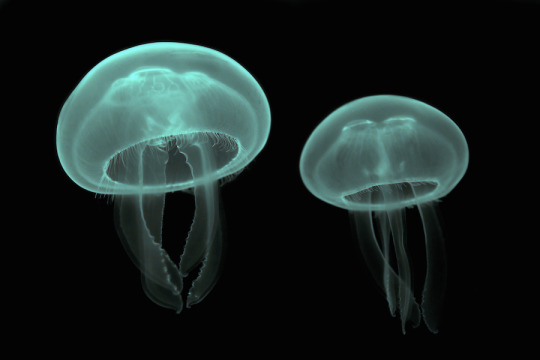
Cnidarians appeared either in the Ediacaran Period or the Cambrian Period (there is some debate). Either way, they showed up long before the Silurian Period.
Thank you for participating in this trivia and tune in tomorrow to learn about early land plants. Fossilize you later!

16 notes
·
View notes
Text
Trivia Tuesday!
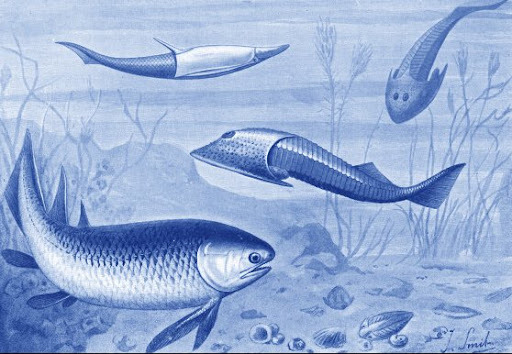
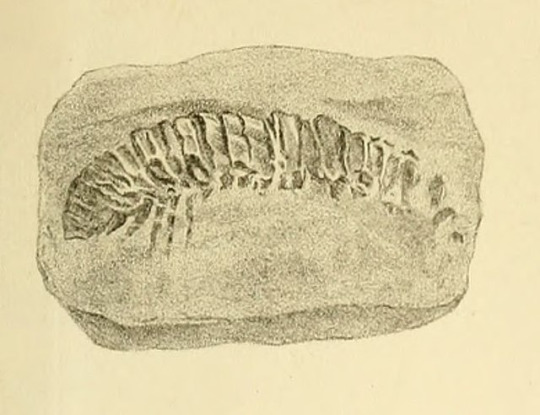
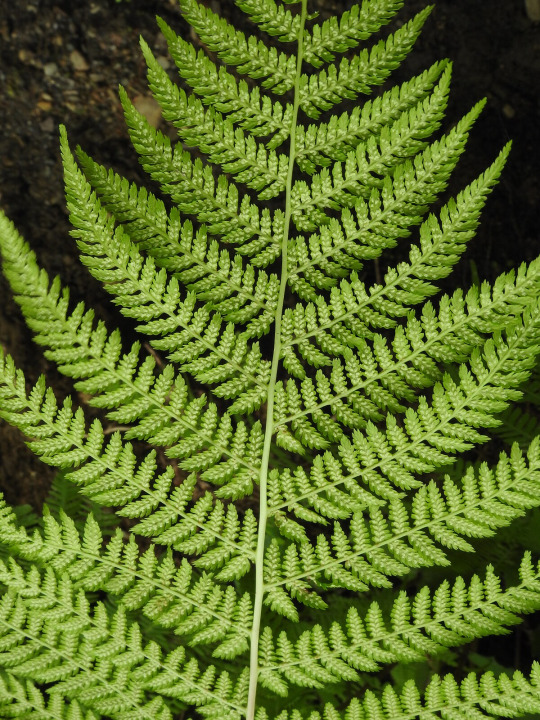
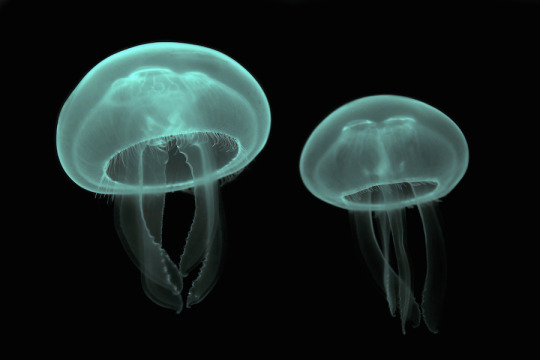
Tune in later this evening for the answer! Fossilize you later!

51 notes
·
View notes
Text
Monday Musings: The End of the Silurian

Unlike the Cambrian and Ordovician Periods, the Silurian Period did not end due to some catastrophic mass extinction event. Plate tectonics simply changed things enough for a significant climate to affect certain groups of organisms, namely those that lived in shallow marine environments.
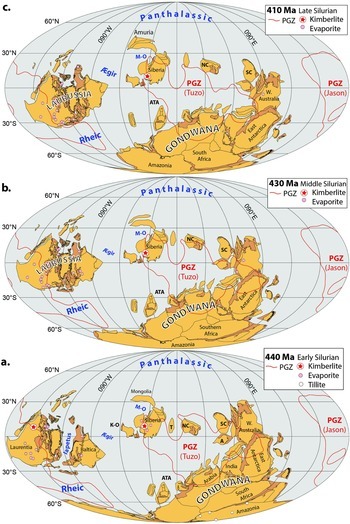
Sea levels continued to rise and the continents were coming closer together as Gondwana moved north and Euramerica was born over the tropics. The earth was on its way to its first proper Greenhouse phase.
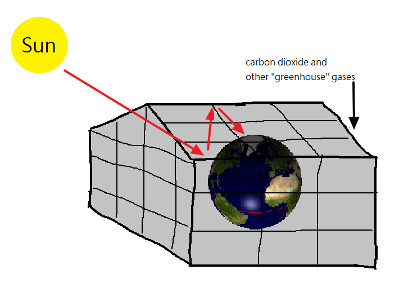
Thanks for coming to today’s lesson and tune in tomorrow to participate in some trivia! Fossilize you later!

#geology#fun facts#science education#science communication#paleontology#geologic time scale#silurian
19 notes
·
View notes
Text
Fiels Season hiatus
After the already scheduled posts, this blog will be on hiatus while I am out in the wilds of Montana digging for dinosaurs. If you want to keep up, I will still be posting videos on youtube. Have a good summer!

8 notes
·
View notes
Text
Fossil Friday: Kampecaris
It has long been assumed that amphibians were the first animals to venture onto dry land from marine ecosystems. However, that isn’t quite true.
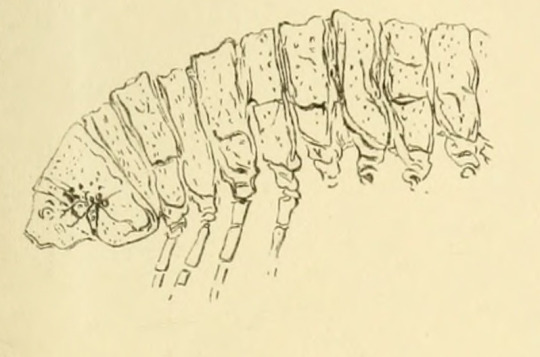
Kampecaris was discovered in Scotland in the late 1800’s in the Old Red Sandstone (Silurian-Devonian aged). It was named by David Page who believed it was the larval stage of a crustacean. Twenty-six years later, B. N. Peach recognized it as a millipede relative.
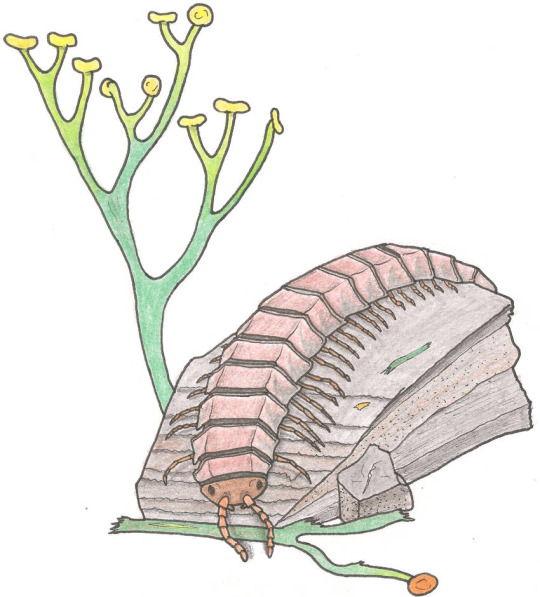
It didn’t live alongside much because there wasn’t anything outside of bryophytes (non-vascular plants consisting of liverworts, hornworts, and mosses), fungi, and the very first vascular plants.

It belongs in the clade Bilateria, the clade Protostomia, the superphylum Ecdysozoa, the phylum Arthropoda, the clade Mandibulata, the subphylum Myriapoda, and the class Diplopoda. From there things get difficult and more specimens need to be found and studied to resolve this.
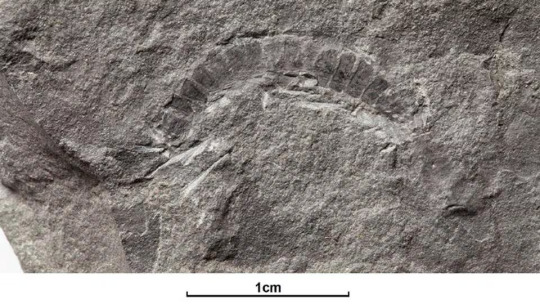
Kampecaris was not a very big animal, only 20-30 mm (around 1 inch) in length. It has three recognizable sections: a head, ten limb-bearing segments forming a tapered trunk toward the front and a swollen tail made of modified segments. The cuticle forming the exoskeleton was thick, composed of two layers and heavily calcified.
Thanks for coming to today’s lesson and tune in Monday to learn about the Geologic Time Scale. Have a good weekend and fossilize you later!

12 notes
·
View notes
Text
Throwback Thursday: Charlotte H. Murchison

This is Charlotte Murchison, wife of Roderick Murchison. She was born in Hampshire, England. She met Roderick in 1815 and they were married that same year. She had developed a love geology much earlier than her husband and had loved collecting and studying minerals. She encouraged her husband to return to geology and eventually, the moved to London so he could do just that.

She and her husband worked together both in the field and in their studies. She collected many fossils and was an exceptional painter. In fact, her fossil collection was so well-kept that it was studied by William Buckland and James Sowerby. Sowerby was so impressed by her sketches that he named an ammonite fossil she sketched after her, Ammonites murchisonae (now Ludwigia murchisonae).

She accompanied her husband and Charles Lyell to France and while they were out on their excursions, Charlotte would build panoramas of the region which would be incorporated into her husband’s work. Lyell was impressed with her skills at sketching and her diligence in labelling specimens. However, she had to push Lyell into allowing women to attend his geology lectures.

Sadly, due to her first trip to mainland Europe, Charlotte had contracted malaria which caused life long health problems and eventually killed her.

Thanks for coming to today’s lesson! Tune in tomorrow to learn more about the first land animal! Fossilize you later!

26 notes
·
View notes
Text
Wordplay Wednesday: Orogeny
The word “orogeny” has come up a bunch but what does it mean? It is a period or phase of active mountain building. Usually associated with convergent plate boundaries.
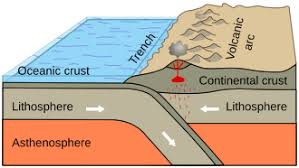
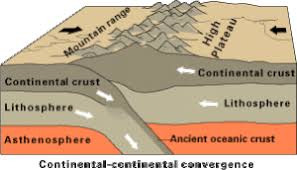
Ongoing orogenies include the Himalayan,
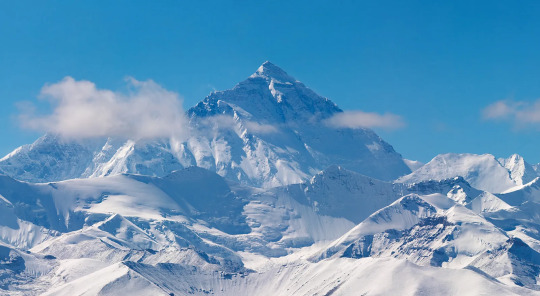
Andean
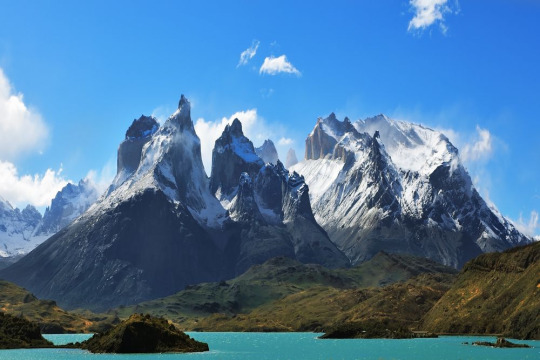
and Mediterranean Orogenies.
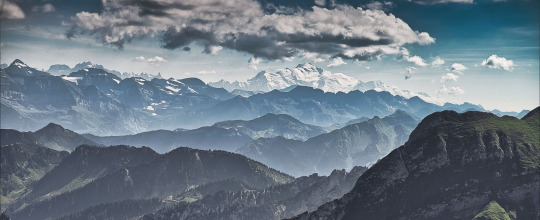
Other similar words used alongside this include orogen, orogenic belts and orogenesis.
An orogen or orogenic belt is the part of Earth’s crust involved in forming mountains.
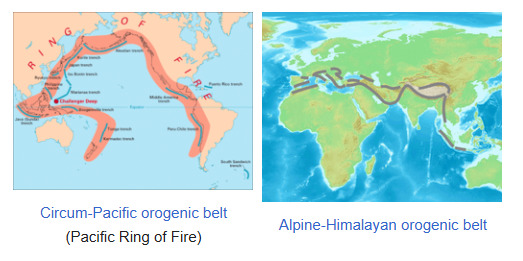
Orogenesis is a process in which the Earth’s crust is folded and deformed by lateral compression to form mountains.
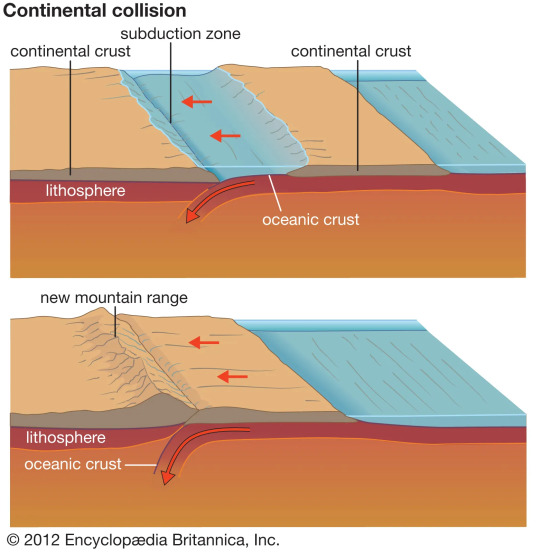
Thanks for coming to today’s lesson and tune in tomorrow to learn about a British geologist who helped identify Silurian rocks. Fossilize you later!

#geology#science education#fun facts#orogeny#mountains#mountain building#plate tectonics#convergent plate
8 notes
·
View notes
Text
Trivia Answer!

What were the three paleocontinents involved in the Caledonian Orogenic Event?
If you said Avalonia, Baltica and Laurentia, you are CORRECT!
Thank you for participating in this trivia and tune in tomorrow to learn about mountain building. Fossilize you later!
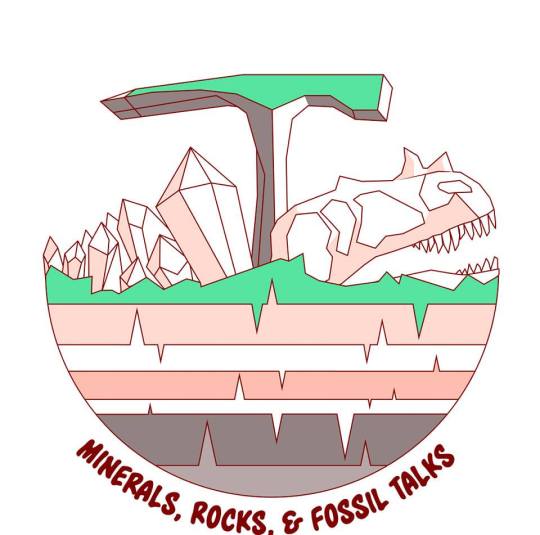
4 notes
·
View notes
Text
Trivia Tuesday!
HINT* Check out last Monday's post on mountain building!
Tune in later this evening for the answer! Fossilize you later!

6 notes
·
View notes
Text
Monday Musings: Silurian Climate Flux
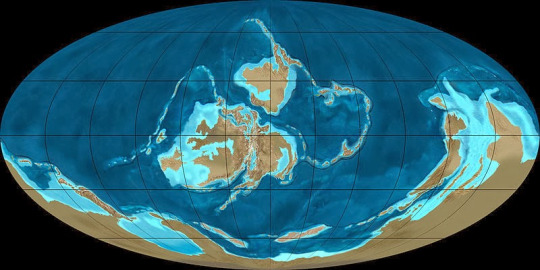
The Silurian Period saw many changes. One major change was the stabilization of the global climate. Or so we thought. Recent studies of carbon and oxygen isotopes have actually brought to light a rather volatile ocean-atmosphere system which correlate to the minor extinctions of the time.
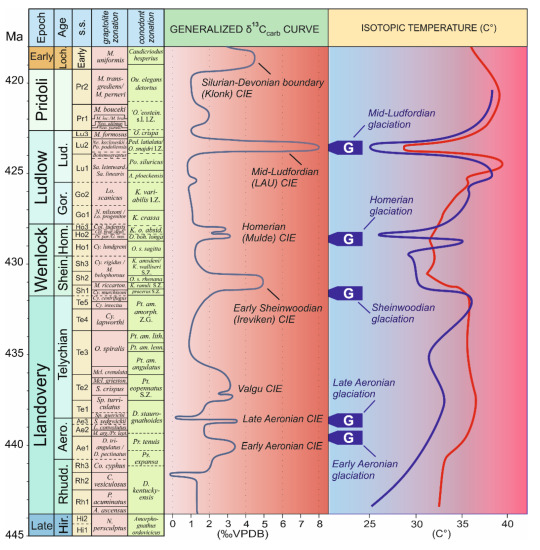
Overall, there was an upward trend in warming globally. Sea level was about 200 m (656.2 ft) higher than today. However, there were some abrupt biodiversity changes noted with nothing to explain them. Lennart Jeppsson had discovered a cyclic stratigraphic pattern in the temporal distribution of conodonts preserved in the carbonate platform rocks of Gotland. The cyclic pattern, which was also paralleled by cyclicity of lithologies, was explained through an oceanic model that described shifts between two stable oceanic-climatic states. The driving force for the cyclic pattern was changing areas for production of oceanic deep-water over time from high latitudes to low latitudes.
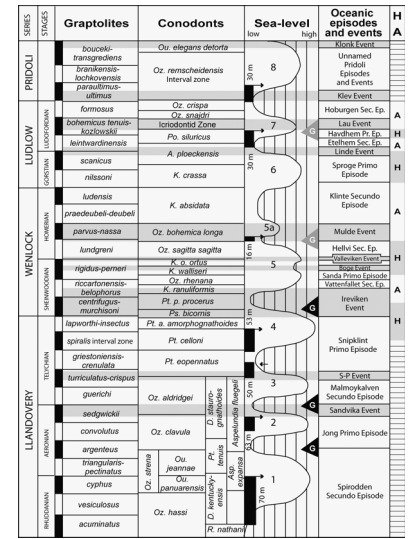
These cyclic changes have been linked to three significant events: the Ireviken Event, the Mulde Event, and the Lau Event. Each of these are a minor extinction event. The Ireviken of the early Silurian was a profound extinction of conodonts. The survival ratio was 12 out of 60 globally known species and they never recovered. Graptolites were also hit pretty hard. Chitinozoans and acritarchs experienced as turnover (meaning some went extinct while others appeared in the fossil record). This event appears to start after a sea-level fall or regression.
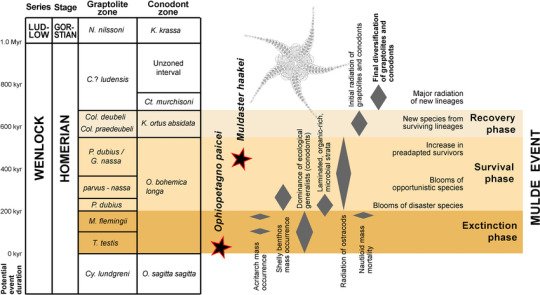
In the Middle Silurian was the Mulde Event. Graptolites suffered the most this time. In fact, the accumulation in some areas literally blackened the bedding planes. Contemporaneous formation of organic-rich shale, alum shale, and not least the formation of the so-called ‘boundary coal seam’ in deep water environments shows that anoxia was widespread. Other pelagic groups were hit as well including planktonic radiolarians. They went from 28 species to 2. Again, this event started at least, with a regression of sea level.
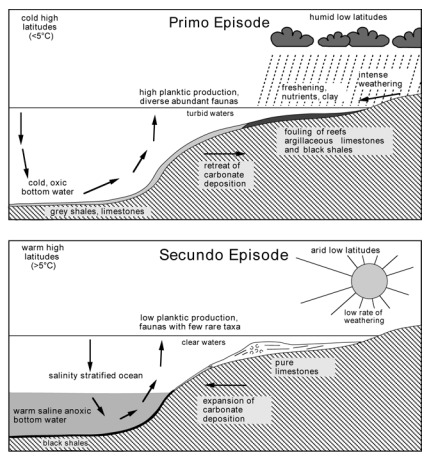
In the Late Silurian was the Lau Event. Poor conodonts were hit again losing 17 of 23 species by the end. Graptolites were reduced by 70% and brachiopods and bivalves experienced a large turnover. Again, this is associated with a substantial sea-level drop.
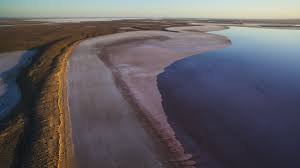
Thanks for coming to today’s lesson. If you are interested in reading more you can check out this paper: https://www.researchgate.net/profile/Mikael-Calner/publication/228769324_Mass_Extinction/links/00b7d52b832a498f82000000/Mass-Extinction.pdf and tune in tomorrow to participate in some trivia! Fossilize you later!

28 notes
·
View notes
Text
Fossil Friday: The Time When Fish Ruled the Earth
The Silurian Period could be called the time when fished ruled the Earth. Fish rapidly diversified throughout the period. There are two main groupings of fish that evolved: jawless and jawed.
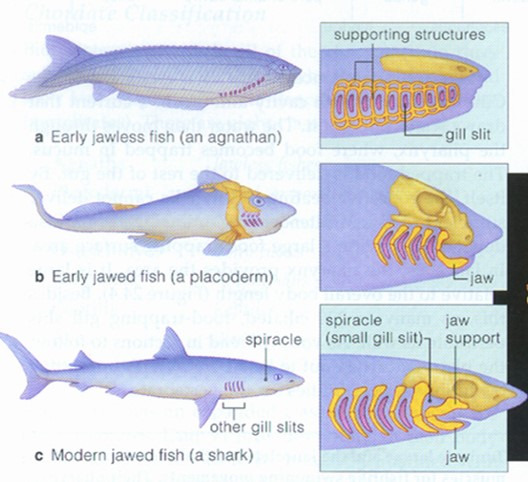
Jawless fish first appeared in the Late Ordovician: Astraspida and Arandaspida. Astraspids are small, armored jawless fishes characterized by a dermal ornamentation of large, star-shaped tubercles of fine-tubuled dentine ("astraspidine"), covered with a thick, glassy cap of enameloid. They are represented by a single genus Astraspis.
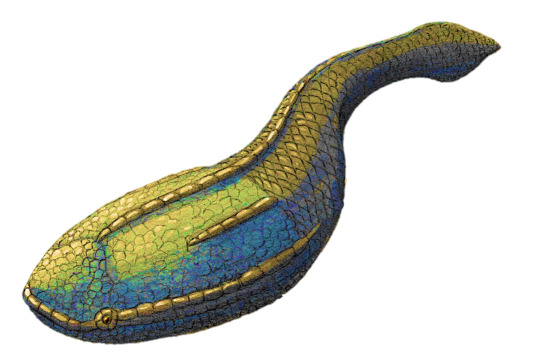
Arandaspids are another small, armored fish with a flat rather than oval-shaped dorsal shield. These are represented by several genera of which Sacabambaspis is the most well-known. Check out my post on Sacabambaspis.
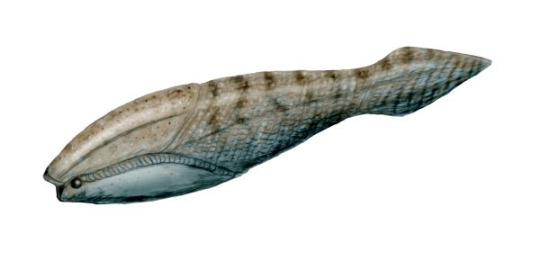
In the Silurian, several new groups of jawless fish appeared including thelodonts, heterostracans, osteostracans, and anaspids. Thelodonts were some of the first fish with scales rather than plates of armor. They first appeared in the Ordovician but they flourished in the Silurian. They lacked an ossified skeleton and the scales were either poorly attached or not attached to each other at all which makes finding a complete one incredibly difficult. The scales were small, 0.5-1.5mm, and didn’t overlap. They were teardrop-shaped and pointed on one end giving them there name “nipple tooth” They were ridiculously common in their habitats and globally distributed making them useful biostratigraphic markers.

Heterostracans also appeared in the Ordovician and radiated rapidly in the Silurian. Consisting of around 300 species, their head shields differed greatly from one another. Most had two plates which formed the dorsal shield and one large ventral shield with a series of scales arranged along the sides. The scales are composed of three layers of dentine and aspidine (an acellular bony tissue unique to them and thelodonts). The middle layer was honeycombed with tiny holes called cancella. One distinguishing characteristic was their single exhalant opening into which the gills open.
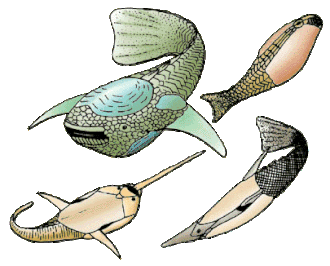
Anaspids were small armor less jawless fish. In fact, the name means “shield less ones”. They are covered in small, weakly mineralized scales and a row of large scutes running down the back. A major synapomorphy is the large tri-radiate spine behind the gill openings.

Osteostracans were the first group of fish with paired fins. They are often called ostracoderms, they were similar to lampreys in possessing two pairs of semicircular canals in the inner ear (as opposed to three in jawed vertebrates). These fish are the sister group to jawed fishes.
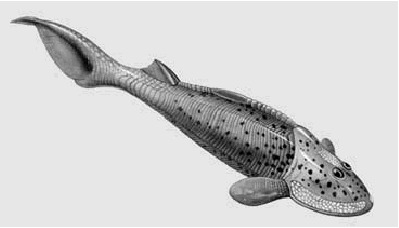
The jawed fishes first appeared in the Silurian Period. Four major groups radiated during this time: placoderms, acanthodians, cartilaginous fishes and bony fishes. Placoderms were mostly predatory armored fishes similar to the jawless ones. They were some of he earliest jawed fish and were the first ones to develop pelvic fins, the second set of paired fins. Some species have been found to be viviparous.
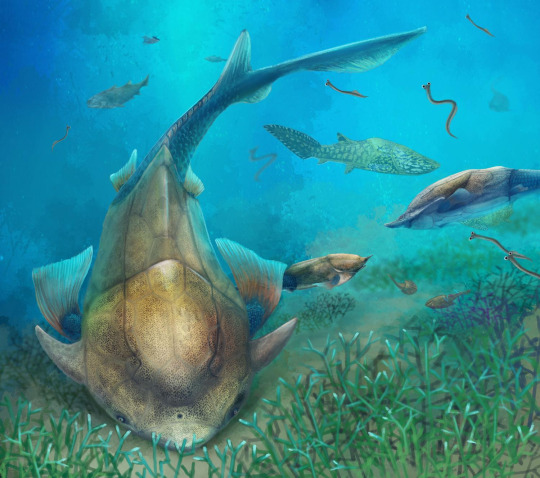
Acanthodians were small fishes with slender bodies. Th paired fins were modified to long spines earning then the nickname “spiny sharks”. Unlike most sharks, acanthodians lacked teeth. Many even moved to freshwater.
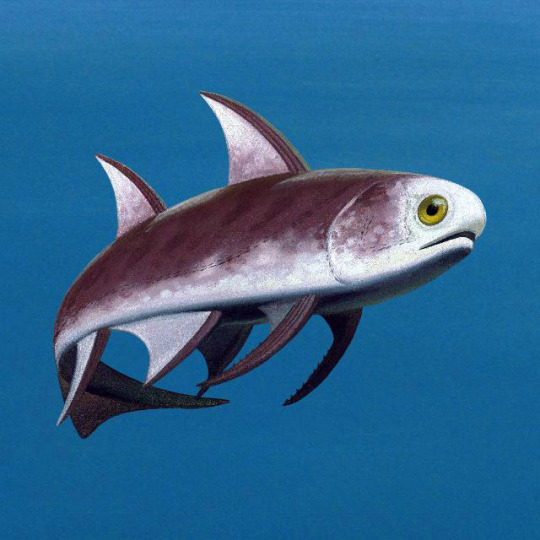
Chondrichthyes or cartilaginous fishesmay have evolved from acanthodians. This group consists of modern sharks, rays, skates and chimaeras.
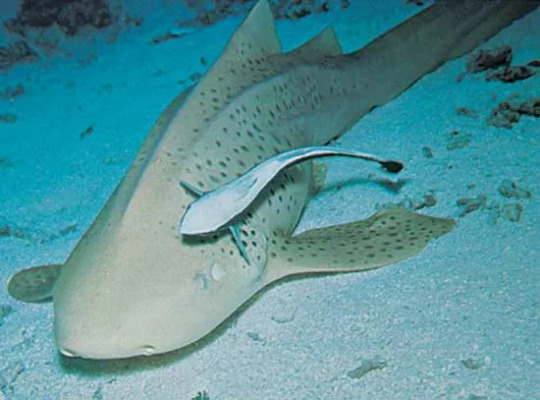
Finally, the first Osteichthyes or bony fishes appeared in the Silurian Period. Unlike all the other fish, they have an endoskeleton made of bone tissue.
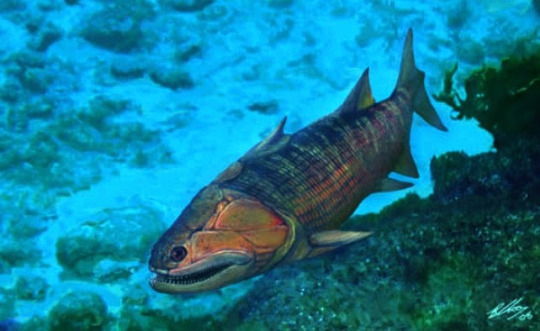
Thanks for coming to today’s lesson and tune in Monday to learn about the climate of the Silurian Period. Have a good weekend and fossilize you later!

#paleontology#fossils#science education#science#silurian#fossil friday#jawless fish#prehistoric fish#jawed fish
22 notes
·
View notes
Text
Throwback Thursday: Roderick Murchison
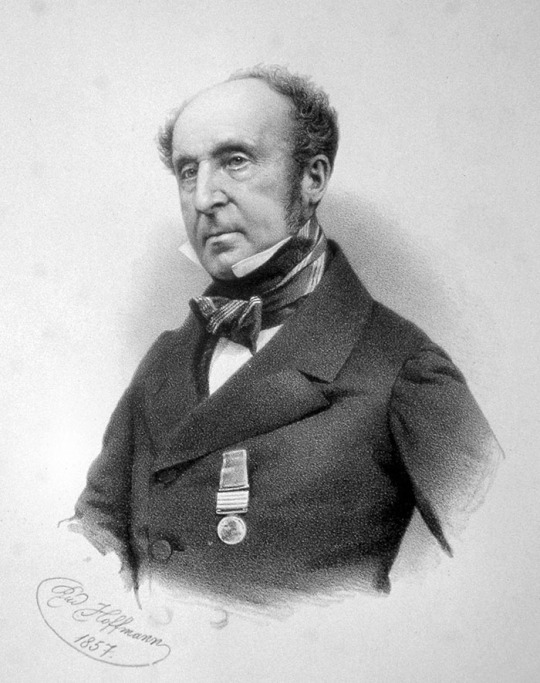
This is Sir Roderick Murchison, 1st Baronet. He was born in 1792 at Tarradale House, a castle in Scotland that Robert the Bruce had destroyed in 1308. Incidentally, I am a descendant of Robert the Bruce. He spent his early days in the military and in 1818, he and his wife settled in County Durham where he met Sir Humphrey Davy who urged him to “turn his energy to science” because hunting like the other nobility was such as waste. His wife encouraged him to pursue science as well, and he became fascinated with geology (and, I mean, who wouldn’t?).
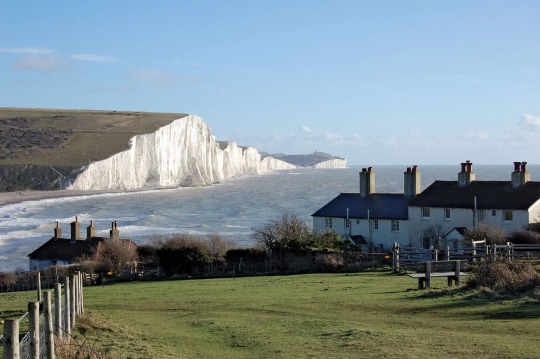
He and his wife studied the geology northwest of Sussex and parts of Hampshire and Surrey. He then joined Charles Lyell in exploring the volcanic rocks of Auvergne (Check out the George Scrope video for more on this). He also worked with Adam Sedgewick on the geological structure of the Alps.
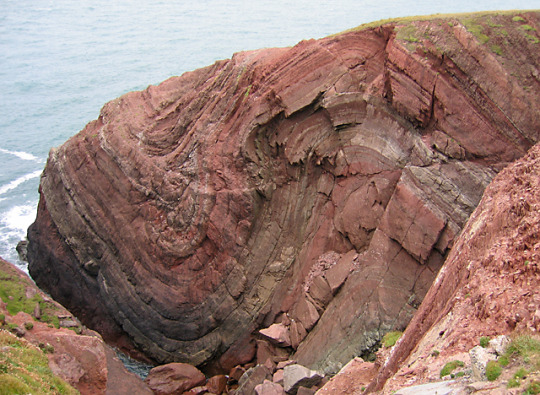
One of his biggest contributions was in helping to identify the relative age of rocks on the Welsh-English border. For a long time, it was unknown whether a greywacke underlying the Old Red Sandstone was from the same time period or not. They had been unable to locate as fossil remains…until Murchison.
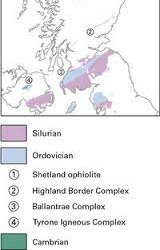
It did have to be broken down more. Murchison had lumped everything older than the Old Red Sandstone into the Silurian so the Cambrian and the Ordovician Periods had to pulled out but it was a pretty good start especially considering he made correlations, not just in the UK but also in Germany and Russia. It’s not easy to correlate rocks across counties. Hell, we struggle to properly correlate rocks across state lines here.
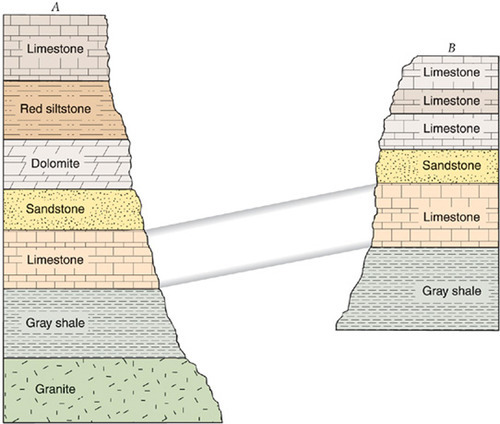
He was knighted in 1846 for his work and has since had many things including a crater on the moon named after him.
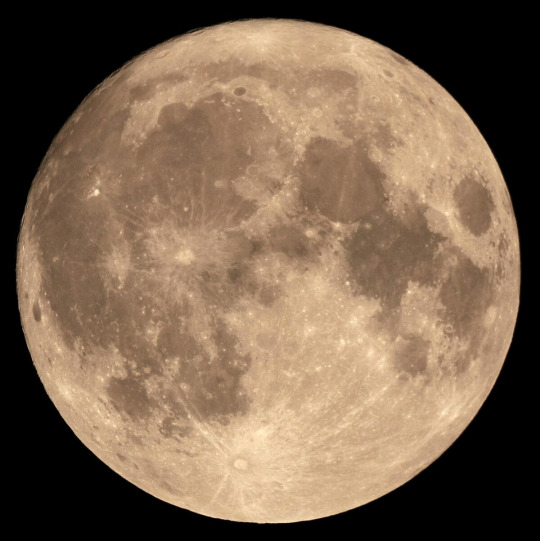
Thanks for coming to today’s lesson! Tune in tomorrow to learn more about fish in the Silurian Period! Fossilize you later!

10 notes
·
View notes
Text
Wordplay Wednesday: Silurian
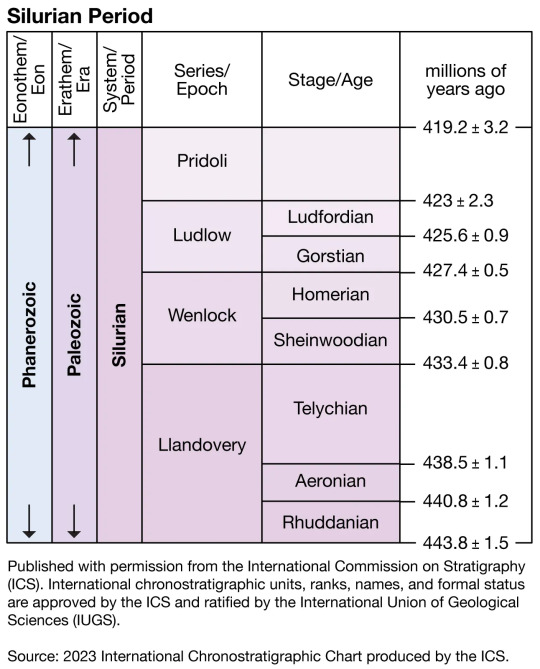
The name Silurian comes from the Silures tribe of southeast Wales. They were a Celtic tribe that had shared a northern border with the Ordovices tribe (yes, the tribe the Ordovician Period was named after). The people were described as looking closer to the Celtic tribes on the Iberian Peninsula than on the rest of Breton. It is possible that they had migrated there before Rome had conquered the island.
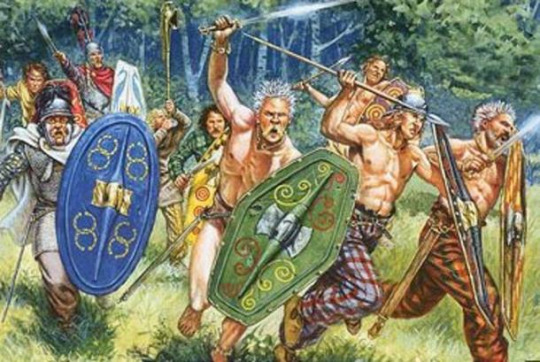
The word Silures might have come from the root word “silo” meaning “seed” and might have meant “kindred stock”.
Thanks for coming to today’s lesson and tune in tomorrow to learn about the man who named the Silurian Period. Fossilize you later!

14 notes
·
View notes
Text
Trivia Answer
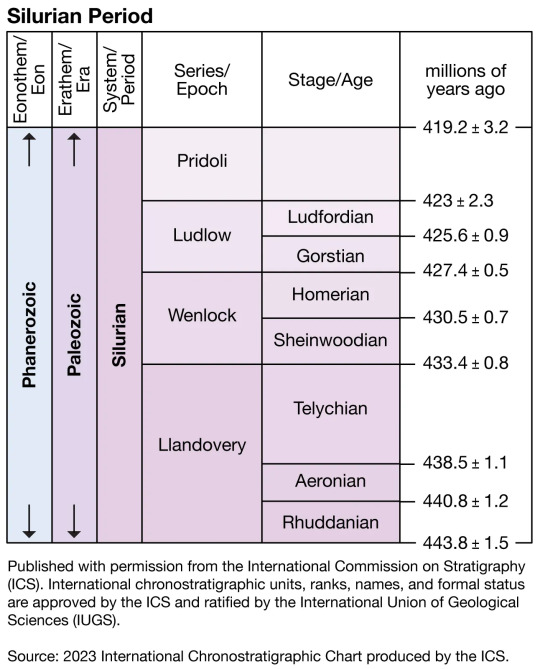
How long did the Silurian Period last? If you said
24 million years
you are correct!
Thank you for participating in this trivia and tune in tomorrow to learn about the etymology of Silurian. Fossilize you later!
12 notes
·
View notes
Text
Trivia Tuesday!
Tune in later this evening to see if you got the answer right! Fossilize you later!
6 notes
·
View notes